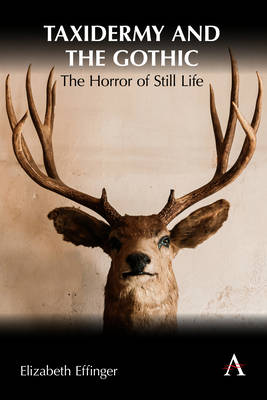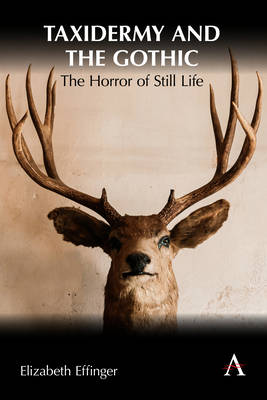
- Retrait gratuit dans votre magasin Club
- 7.000.000 titres dans notre catalogue
- Payer en toute sécurité
- Toujours un magasin près de chez vous
- Retrait gratuit dans votre magasin Club
- 7.000.000 titres dans notre catalogue
- Payer en toute sécurité
- Toujours un magasin près de chez vous
Description
Taxidermy and the Gothic: The Horror of Still Life is the first extended study of the Gothic's collusion with taxidermy. It tells the story of the emergence in the long nineteenth century of the twin golden ages of the Gothic genre and the practice of taxidermy, and their shared rhetorical and narratological strategies, anxieties, and sensibilities. It follows the thread into twentieth- and twenty-first-century culture, including recent horror film, fiction, television, and visual arts. Like late Victorian Walter Potter's infamous taxidermied two-headed kitten, the Gothic and taxidermy are two discursive bodies, stuffed and stitched together. Moving beyond the well-worn path that treats taxidermy as a sentimental art or art of mourning, this book takes readers down a new dark trail, finding an overlooked but rich tradition in the Gothic that aligns it with the affective and corporeal work of horror (e.g., anxiety, hesitation, disgust) and the unsettling aesthetics, experiences, and pleasures that come with it. Over the course of four chapters, it argues that in addition to entwined origins, taxidermy's uncanny appearance in Gothic and horror texts, surprisingly overlooked in most criticism, is a driving force in generating fear. The core argument of the book is that taxidermy embodies the phenomenological horror of stuckness, of being there. Taxidermy often sits, presiding over characters in critical moments in Gothic texts, sometimes foreshadowing their own fate (as in the case of Norman Bates's mother in Psycho, or the protagonist in Roald Dahl's short story "The Landlady"), but most frequently taxidermy works to amplify the affect of horror, generating anxiety over what will be forever preserved and never escaped: the violence of life. Key texts examined in this book are nineteenth-century taxidermy manuals and specimens, including the anthropomorphic work by notorious taxidermists Walter Potter and Charles Waterton; contemporary artistic taxidermy, with a focus on the shocking work by Scott Bibus, Kate Clark, and Mothmeister; literary works, by authors such as H.G. Wells, Alice Munro, and Claudia Rankine; and horror film and tele-series, with a focus on Get Out (2017), The Cabin in the Woods (2011), and Tell Me Your Secrets (2021). In short, taxidermy's imbrication with the Gothic is more than skin deep: these are rich discourses stuffed by affinities for corporeal transgressions, the uncanny, and the counterfeit. This book will help carve new scholarly directions in the bodies of Gothic and horror studies, animal studies, and art history and visual culture.
Spécifications
Parties prenantes
- Auteur(s) :
- Editeur:
Contenu
- Nombre de pages :
- 250
- Langue:
- Anglais
- Collection :
Caractéristiques
- EAN:
- 9781839985997
- Date de parution :
- 05-03-24
- Format:
- Livre broché
- Format numérique:
- Trade paperback (VS)
- Dimensions :
- 152 mm x 229 mm
- Poids :
- 453 g







